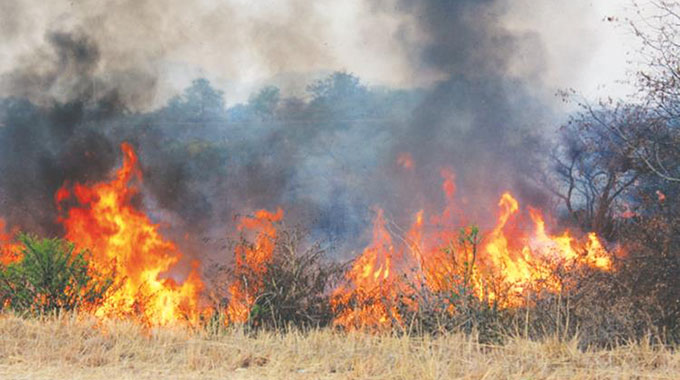EMA speaks on reducing impact of veld fires

The Herald, 12 April 2012
UNCONTROLLED fires are a menace to the bio-physical, social and economic environment because of its trail of destruction.
The fire incidences, hectarage, property to be lost and loss of lives have to be reduced. This reduction is only possible if everyone plays their part.
As EMA, this is going to be possible if everyone takes heed of our calls to construct fireguards and act in a responsible manner.
What should property owners and farmers do to prevent veld fires? It is a statutory requirement under Statutory Instrument 7 of 2007 on EIA and Ecosystem Protection, that any land user, owner or occupier of any land to put in place fire prevention mechanisms.
One of these mechanisms is by constructing standard fireguards. A standard fireguard should be at least nine metres on either side of a boundary and at least 4,5m wide for internal ones.
All fireguards should be free from inflammable material and this is made possible by weekly routine checks of these fireguards.
Fireguards are essential in protecting property and lives of various living organisms, including human beings.
It is in the interest of the protection of our yields, lives and property that farmers need to prioritise the construction of fireguards.
How are fireguards constructed?
There are various ways, which can be used to construct fireguards. Each fireguard construction technique has its own merits and demerits.
The choice to use any one technique over the other is dependent upon such variables like labour costs, availability of farm machinery and knowledge.
The following are some methods of fireguard construction, using an ox drawn plough, tractor drawn plough and employing controlled burning.
First, create fire traces which are strips of cleared areas on either side of the fireguard area and burn the outstanding grass.
To construct the fireguards by employing prescribed burning one should develop fire traces first.
A fire trace is a narrow strip cleared on either side of a fireguard to facilitate burning. Fire traces help to stop fire encroachment into the unwanted zones/areas.
In addition to fire traces, one should also construct fire cut-offs. Fire cut-off is a narrow strip cleared across a fireguard to break fuel load continuity along its length.
This implies that, fire traces and fire cut-offs should be put in place before one starts the exercise.
Fire cut-offs help in controlling burning, hence complements the function of fire traces.
LESSONS FOR TODAY
Veld fires are a common phenomenon in the predominantly savannah ecosystems of Zimbabwe, and have been a challenge for so many years.
The majority of wildfires in developing countries, are caused by human activities usually associated with land-use practices and changes, hence the need to educate people on the safe use of fires during dry and windy seasons of the year.
Active involvement of the local people has been recognised as a condition for the successful implementation of fire management programmes, especially at the interfaces between wild lands, managed systems and residential areas.
Current systems and technologies to share veld fire information are needed to help raise awareness and alertness of communities. This is a crucial step towards disaster management.
Not only do runaway fires have severe financial implications for the farming and forestry sectors, but often the hardest hit are those who can least afford it — the rural poor and the urban poor, living in squatter camps.
For historical information contact:
Zimpapers Knowledge Centre at Herald House on:
+263 8677 004323;
+263 0242 795771
E-mail: [email protected]








Comments